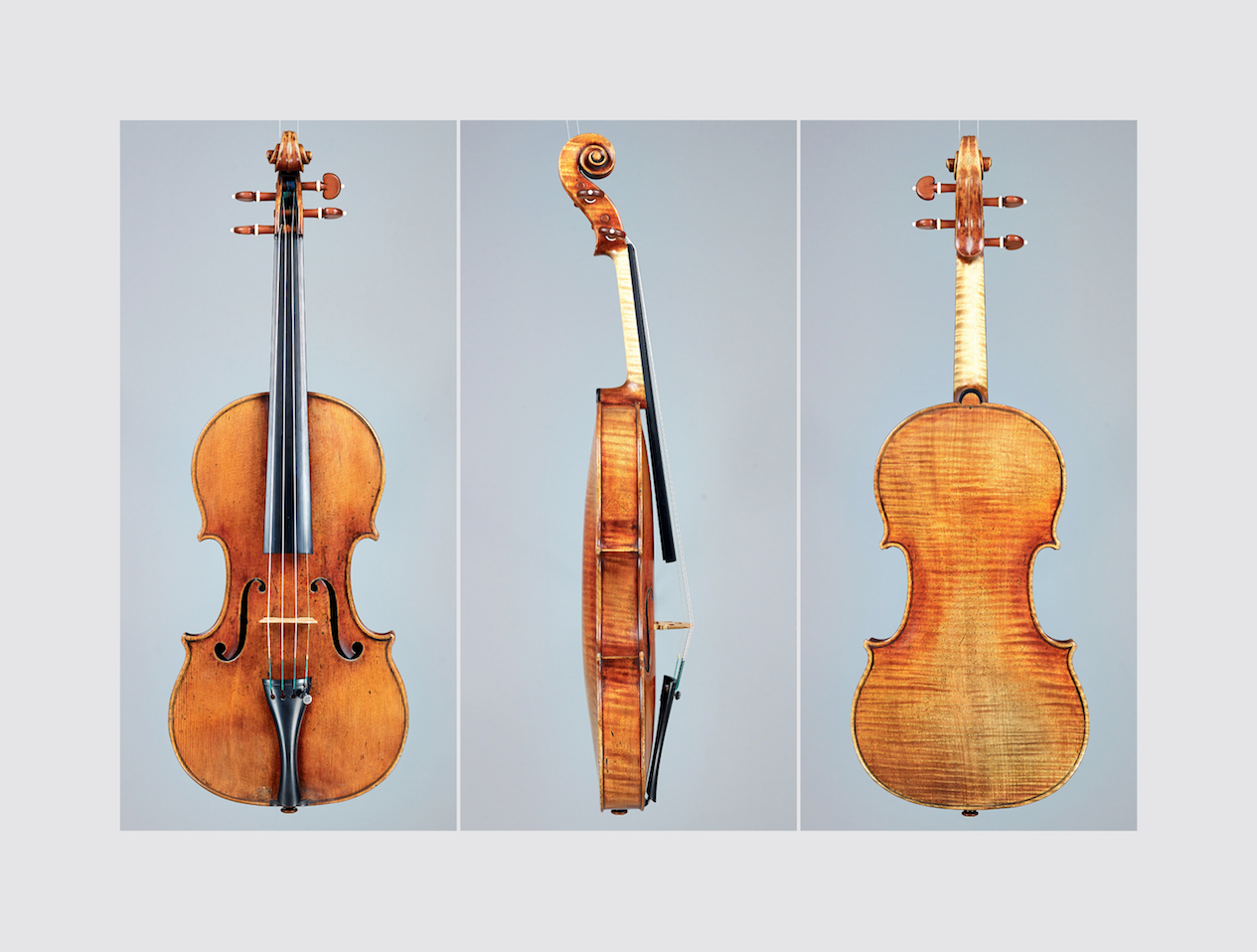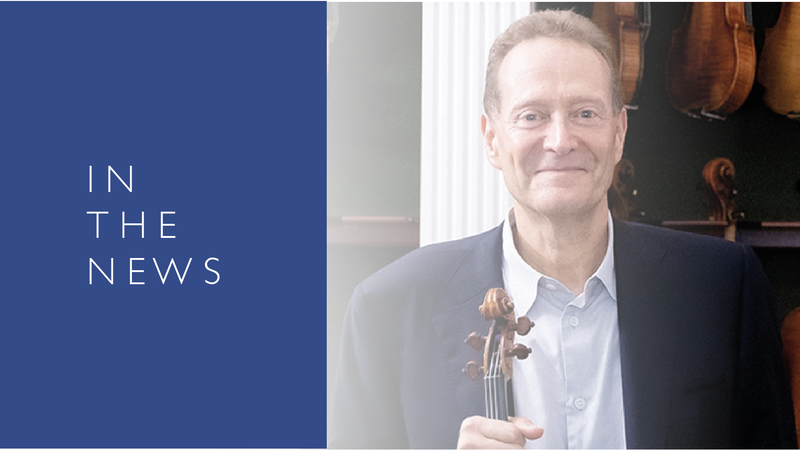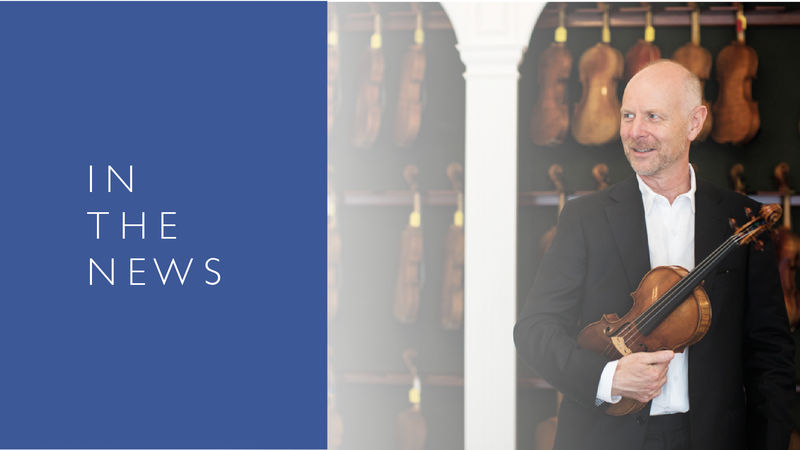Frank Kuznik, of classical music magazine Bachtrack, looks at the history of the 1707 ‘Rivaz, Baron Gutmann’ violin by Antonio Stradivari and its current player, Janine Jansen
THE 1707 'RIVAZ, BARON GUTMANN' STRADIVARI VIOLIN
INSTRUMENT FEATURE
The Rivaz came to Jansen courtesy of J & A Beare, a London firm with more than 125 years’ experience selling and restoring fine antique violins, violas, cellos and bows. Beare’s has been a longtime supplier to some of the greatest names in classical music, players like Mstislav Rostropovich, Itzhak Perlman, Sir Yehudi Menuhin, Yo-Yo Ma and Joshua Bell, to name just a few. An offshoot, the Beare’s International Violin Society, helps musicians find both high-quality instruments and sponsors – in Jansenʼs case the Norwegian foundation Dextra Musica, that acquires and loans instruments to deserving Norwegian players, including Jansen, who after a trial period took formal possession of the Rivaz Stradivari in September 2016.
There was little to suggest that Antonio Stradivari would become the worldʼs premier violin maker when he opened his workshop in Cremona, Italy in 1680. His neighbor Nicolò Amati was considered the finest luthier of that era, and there is speculation that Stradivari may have apprenticed briefly with Amati. In fact, Stradivariʼs early work so closely resembles Amatiʼs that the years 1680-90 are commonly referred to as Stradivariʼs “Amatisé period.”
A gifted craftsman, Stradivari made a variety of instruments, including mandolin, guitar, viola and cello before focusing on the violin. (A 1709 innovation in cello design is considered one of his greatest achievements). In the 1690s he developed the “long pattern”, which increased the length of the violin, giving it greater volume and a stronger tone. Around 1700 he switched to a more streamlined design with a wider outline, straighter, stronger middle curves, and flat, powerful arching that became the new standard for the instrument. The years 1700 to 1720 are considered the “Golden Period” of the Stradivari workshop, when the most prized violins were made.
With its characteristic orange-red varnish, one-piece back and incomparable sound, the Rivaz Stradivari is a classic product of that period. The original owner was reputedly Domenico Dragonetti, a virtuoso double bass player and fine arts aficionado who amassed a spectacular collection of musical instruments that included another Stradivari, now known as the “Dragonetti”, a Gasparo da Salò double bass, a “Guarneri del Gesù” violin and two Amati violins.
In 1818 the Rivaz was acquired by its first namesake, F.V. Rivaz, one of a family of stockbrokers in London. They were enthusiastic amateur musicians who, according to London violin dealer John Betts, acquired several Stradivaris. The violin next appears in an 1884 certificate issued by W. E. Hill & Sons, a prominent violin dealer, naming the owner as George Palmer, a violin professor at the London Guildhall School of Music. The certificate described the violin as “a splendid specimen”.
In 1907 Palmer sold the Rivaz to Hamma & Co., a well-regarded violin maker in Stuttgart. It remained in Germany for the next 15 years, first passing to another violin maker, Wilhelm Hermann Hammig in Berlin, then to a private owner, Jascha (Jacob) Sussman. In 1922 Sussman sold it to Emil Herrmann, a Berlin violin dealer and restorer who later operated a world-renowned violin shop in New York City.
Herrmann did not have it long before selling it to Baron Viktor Gutmann von Gelse und Belišće, a Croatian aristocrat, war hero and industrialist. Gutmann was not a musician himself, but was connected to the classical music community in Vienna through his wife, Luise Bloch-Bauer, a socialite and member of a wealthy Viennese family that regularly hosted salons for artists and intellectuals. Luise was a devotee of the Strauss musical dynasty; her Aunt Adele was the muse and most famous model of painter Gustav Klimt.
For reasons that remain unclear, Gutmann sold the Rivaz back to Herrmann in 1930, then went on to an unfortunate end. After they were married, he and Luise returned to his hometown, Belišće, where he became beloved as the employer of many locals in the family lumber business. When World War II began, the entire family was arrested and sent to a concentration camp, which they miraculously managed to survive. But Gutmannʼs luck ran out in 1946, when the Communists took over Yugoslavia and executed him because they believed him to be a capitalist and, falsely, a Nazi collaborator.
Meanwhile, Herrmann had again sold the Rivaz quickly, this time to an American collector, Dr. Albert Sommer. According to a brief provenance issued by Hermannʼs firm in 1958, Sommer “exchanged it with the Wurlitzer Company, who sold it to a prominent attorney in Detroit, and at his death it reverted to Emil Herrmann”. That was in 1944, and over the next 70 years the Rivaz passed through a series of private collectors, most famously the painter Maulsby Kimball, who held it for 31 years.
The official provenance for the violin shows that it was played in 1957 by Kenneth Gordon, who spent 43 years as a first violinist with the New York Philharmonic Orchestra. Gordon started playing violin at the age of six and gave his first recital at 15, earning plaudits from a New York Times reviewer who praised the “boy artist” for his “surprising depth of insight, grasp of style and mechanical adroitness”. The details of his association with the Rivaz, presumably on loan from Kimball, are unknown. The New York Philharmonic has no official record of Gordon playing the Rivaz. Instead, thereʼs a notation that in 1989, when the orchestra acquired a c.1727 Guarneri del Gesù, it was given to concertmaster Glenn Dicterow, who passed the c.1715 “Duke of Cambridge” Stradivari he had been using to Gordon.
Murky provenances are not unusual for valuable instruments, which have a way of disappearing for years or decades at a time. After Huguette Clark, a reclusive US heiress, died in 2011, a Stradivari was discovered in her closet, where it had apparently been sitting for 25 years. In 2015 a Stradivari stolen from virtuoso violinist Roman Totenberg 35 years earlier was recovered after the thief died and his ex-wife found it while sorting through his belongings. An estimated 650 instruments (including violas and cellos) made in the Stradivari workshop survive, and almost every one of them has a similarly colorful history.
Whatʼs absolutely clear about the Rivaz Baron Gutmann is that for the first time in nearly 200 years, it is now in the hands of a gifted musician who regards it more as a companion than a showpiece. “An instrument definitely adjusts to its player,” Jansen said after playing it for a few months. “This may sound strange, but you get to know one another. Itʼs a mutual thing.”
The terms of the loan from Dextra Musica are for ten years, but this friendship has the potential to last a lot longer than that. In a video thank-you to Beare’s, Jansen said, “Youʼve been extremely helpful, supportive and also very patient in finding a way to let me play this instrument – hopefully for the rest of my life.”
___________
This article was sponsored by J & A Beare
By Frank Kuznik



